Combat aircraft. The most massive grief of the Imperial Navy
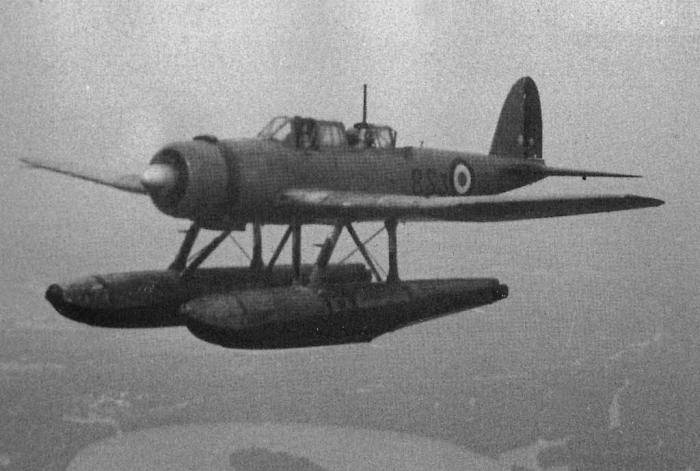
The most massive, the most controversial since its inception, went through all the main battles aviation imperial fleet - it's all about our hero. Indeed, this is a very controversial plane. But this is not the fault of the designer's idea, not the orders of the command of the aviation of the fleet, but a fatal combination of circumstances.
At all story the appearance of this aircraft is the history of the search for solutions by the technical department of the headquarters of the aviation of the fleet. Well, since we are all people to one degree or another military, the word "mess" is the best term to describe the processes that usually take place in any army.
In the institution that was called "Kaigun Koku Hombu", that is, the technical department of the headquarters of the naval aviation was a mess. But there were very good reasons for this.
In the story about the F1M reconnaissance aircraft from Mitsubishi, it was said that in the naval aviation in the early 30s there was a tactic in which two types of ejection aircraft were used on the ships of the fleet: a short-range two-seat reconnaissance aircraft and a three-seat long-range aircraft.
The close scout was supposed to be used as "eyes" for his ship and for obtaining information or adjusting the ship's artillery fire. It was considered possible to use the reconnaissance aircraft as an anti-submarine aircraft and even as a component of the ship's air defense system, for which directional weapons were installed on the aircraft.
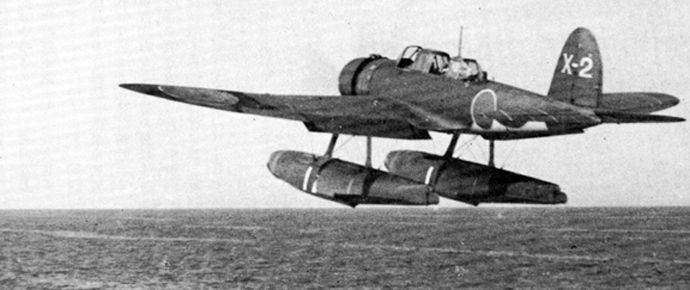
The long-range scout was supposed to be used to collect information at a great distance, so to speak - a strategic scout.
The development of these classes of machines proceeded in parallel. The need for newer long-range and short-range reconnaissance aircraft in the fleet was met systematically and regularly by aircraft manufacturers over the years. Specifically, until 1937.
In August 1937, a military conflict began, which many historians consider the beginning of the Second World War. Sino-Japanese War. At that time, the Japanese ships were armed with fairly modern ejection reconnaissance aircraft of both classes. The close scout was the Nakajima Type 95 or E8N2, a very successful aircraft, and the long range was the Kawasaki Type 94 or E7K1. It is clear that these were float biplanes.
In China, aviation was used very actively. Well-trained Japanese pilots on good planes encountered Chinese who were not very skilled. And the Chinese aviation in general was an exhibition of aviation junk of that time. But - very numerous. And then Soviet volunteer pilots on quite modern I-15 and I-16 joined the war. And the Chinese have gained combat experience.
And the Japanese aviation began to suffer more and more tangible losses. There was not enough aircraft, and a desperate decision was made: to send float E8N2 and E7K1 to support as bombers and attack aircraft.
And the seaplanes did it. And it turned out so decently that the Japanese naval aviation command even revised the concept of using float reconnaissance in the direction of versatility.
Initially, the idea was born to combine two classes of reconnaissance aircraft in one universal aircraft. It was supposed to be some kind of universal seaplane capable of performing the functions of a reconnaissance aircraft, bomber, torpedo bomber, spotter and even a fighter. The aircraft was supposed to have a long flight range (the Japanese calculated autonomy in flight hours, so it should be at least 8 hours), the aircraft had to be able to dive and conduct a maneuvering battle.
All this degenerated into the 10-Shi specification, on the basis of which aircraft firms had to develop and offer the Kaigun Koku Hombu prototypes. But everything went a little wrong, as the military would like.
Having familiarized themselves with the requirements of the 10-Shi specification, the companies "Nakajima" and "Kawanishi" were horrified and refused to participate in the competition. The remaining Aichi and Mitsubishi presented their prototypes F1A1 and F1M1. As already described in the material about the creation of Mitsubishi, the company won thanks to its good relations with Admiral Yamamoto. The process of fine-tuning the Mitsubishi aircraft dragged on for two years, but the aircraft was eventually accepted into service.
In general, the F1M was a very good machine, the maneuverability and armament of which was quite consistent with the fighters of that time, capable of dive bombing, but the range let us down. Just over 400 nautical miles. Thus, there could be no question of any strategic intelligence in the interests of the squadron or fleet.
And the fleet was faced with an unpleasant dilemma: whether to continue using the completely outdated E7K1, and the new F1M could not become the aircraft that would replace it. The E7K2 modification did not solve the problem, so a new aircraft was needed.
And the new 12-Shi specification has been presented. The requirements included a deck float aircraft with a folding wing, two-seater, with a range of 650 miles, forward-facing small arms and a bomb load of up to 250 kg.
The firms "Nakajima", "Kawanishi" and "Aichi" went into battle. As soon as the firms got down to work, they received data on the requirements for a three-seater aircraft. Efforts were divided, Nakajima decided to work on a two-seater car, Kawanishi on a three-seater, and only Aichi continued to work in both directions.
The "Aichi" had its trump card: Yoshishiro Matsuo, a student of Ernst Heinkel, who was more than versed in seaplanes. Assisted by Matsuo Morishigi Mori and Yasushiro Ozawa.
E12A1 (double) and E13A1 (triple) were very similar in appearance. The three-seater aircraft, as expected, was slightly larger and lacked forward-facing armament. Plus, the long-range reconnaissance aircraft was equipped with a less powerful Mitsubishi MK2A Zuisei 11 engine with a capacity of 875 hp.
Both vehicles had folding wing consoles, very much reminiscent of the D3A1 deck dive bomber being developed by Aichi.
The work was carried out so intensively that in April 1938, both prototypes were put out for testing. The E13A1 turned out to be faster and more maneuverable than its two-seater counterpart and, as expected, had a longer flight range.
And at that moment, "Kaigun Koku Hombu" finally decided on the requirements for a two-seater reconnaissance aircraft and ... closed the program, deciding that Mitsubishi 1M would be enough. And he recommended that all participants continue to work on the long-range reconnaissance.
In October, aircrafts from "Aichi" E13A1 and "Kawanishi" E13K1 converged on tests.
The Kavanishi machine surpassed the Aichi product in many respects, with the exception of speed, but it turned out to be more complex both structurally and in terms of operation.
However, in the summer of 1939, both Kavanishi prototypes were lost in disasters. So the plane "Aichi" got into the final and won, as expected.
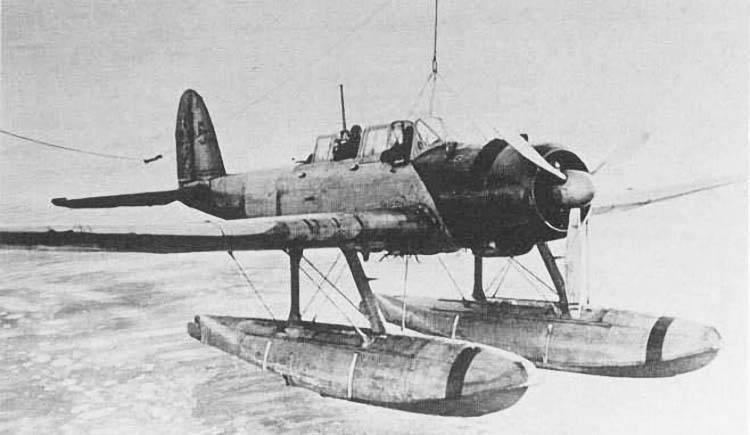
In December 1940, the Aichi seaplane was adopted by the Navy under the designation Rei-shiki minakami tei satsu-ki, that is, Type 0 Model 11 Marine Reconnaissance Aircraft or E13A1. During operation, the long name of the aircraft was abbreviated as usual in "Reisu", that is, "Water-zero".
Reisu was produced at the Aichi plant in the city of Fukanata, at the Watanabe plant in Kyushu and at the 11th Naval Aviation Arsenal in the city of Hiro. A total of 1 aircraft were produced. Moreover, in fact, during the entire production period, the E418A13 has not been modernized.
The E13A1a modification had only a float attachment scheme.
The E13A1b modification had a Type 3 Ku Model 6 radar on board. The radar antennas were installed along the aft fuselage along the sides and on the leading edge of the wing.
The E13A1s modification consisted of replacing the 7,7-mm machine gun in the gunner's cockpit with a 20-mm Type 99-1 cannon. This was an attempt to strengthen the aircraft's defenses.
Obviously, the so-called modifications did not make any significant changes to the aircraft design.
In the combat units "Reisu" began to enter at the very end of 1940. At first, the flight personnel were retrained in training squadrons, and the machine received its baptism of fire in October 1941 in China. Six E13A1s flew several sorties to bomb the Hankou-Canton railway and covered ships that were delivering artillery strikes against targets in China.
By the time Japan entered World War II, the E13A1 was already in service with many parts of the naval aviation. Chichijima, Sasebo, Ominato, Kwajalein, Iwo Jima, Palau - an incomplete list of places where Reisu was already based.
If colleagues from "Mitsubishi" F1M2 mainly entered the armament of coastal bases, then long-range scouts from "Aichi" went to remote islands and ships of the Imperial Navy. A distant scout has nothing to do in the metropolis, right?
The main carriers of long-range reconnaissance ships were warships.
Light cruisers of the Japanese fleet received one "Reis" each. Since the light cruisers of the old types ("Kuma", "Yahagi"), which were used as leaders of destroyers, had to be able to conduct reconnaissance in the interests of the destroyer flotillas.
Not all cruisers received new seaplanes, the fleet's demand outstripped the capabilities of the factories, so that some of the “oldies” E7K served until the moment of the massive dismantling of the catapults.
Heavy cruisers also received Reis. Usually, ships of this class were based on two F1M2 and one E13A1. There were exceptions: on the Tone and Tikuma cruisers, the air group was increased to 5 aircraft, so these ships had two E13A1s each. And in 1943, the heavy cruiser "Mogami" was rebuilt into an aircraft carrier by dismantling the aft towers. Its wing consisted of 7 aircraft, three F1M2 and four E13A1.
Battlecruisers of the Congo class also received Reisu at their disposal. All battleships of the fleet were supposed to have scouts, without exception, but in fact E13A1 was based only on the Congo, Haruna, Kirishima and Hiei. Perhaps, the Yamato and Musashi units, which were supposed to have 7 scouts of all types, included Reisu, but there is no clear data on this.
The question arises: how useful were these scouts? Let's put it this way: their role in obtaining timely data on the enemy was very significant, especially if we recall the lagging behind Japan in the field of radars, which took place to be.
So many hours of monotonous flights "Reis" over the surface of the ocean, aimed at finding and assessing the enemy's forces were very useful. In general, not a single major operation of the Japanese navy could do without Reisu's participation. Intelligence is a very important component.
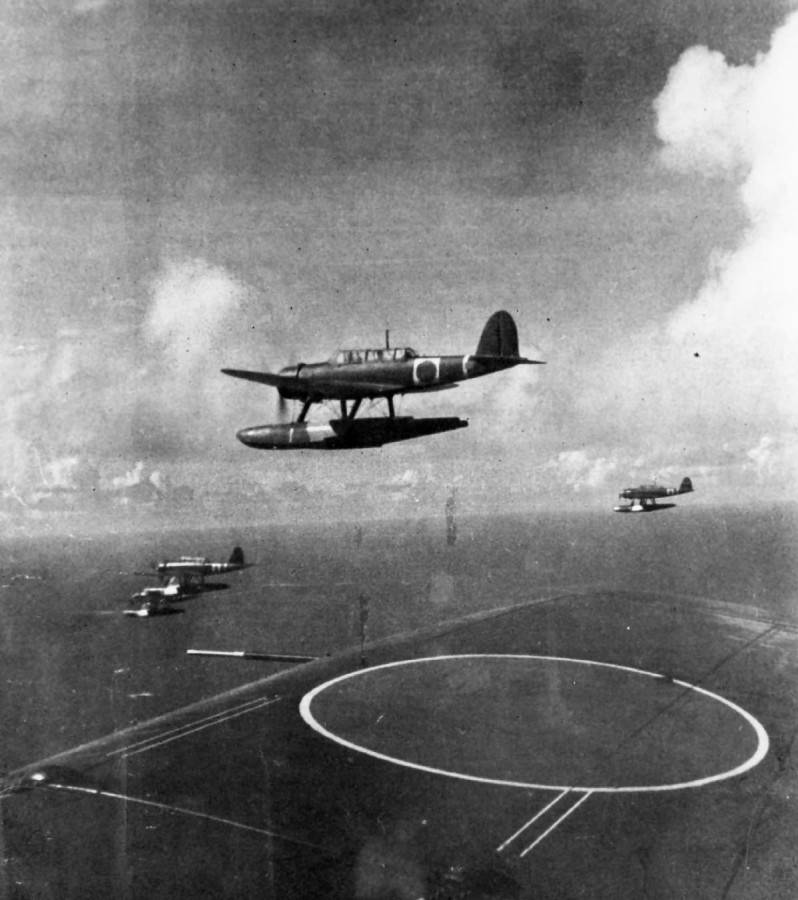
It was "Reisu" from the Japanese heavy cruisers an hour before the attack of Pearl Harbor discovered that the priority targets (aircraft carriers) had left Pearl Harbor. And all the power of Yamamoto's compound fell on the battleships.
And this is the great merit of the Reis crews.
Although literally a few months later, the crew of the seaplane from the cruiser "Tone" "became famous" in the battle at Midway, having discovered American aircraft carriers, but failed to transmit information to their ships. Either the radio did not work, or it worked, but at a different frequency, this is not so important. Significantly, four Japanese aircraft carriers went to the bottom and took with them Japan's strategic advantage in the war.
The loss of Japan's advantage both in the war itself and in the air had a very negative impact on the very conduct of the war. The Reisu continued to fly for reconnaissance, but the further, the more suicidal these flights became. There were no chances to fight off enemy fighters with one 7,7 mm machine gun at all. And the speed did not allow to get away from the Hellcats and Corsairs. So in the second half of the war, flights on the "Reisu" became akin to kamikaze flights: a one-way ticket until it touches the enemy.
The best illustration is Reis's participation in the Battle of the Mariana Islands in 1944. Since there was still a shortage of radars on the Japanese cruisers that performed the reconnaissance function, the E13A1 was assigned the main task of finding American ships. The squadron of Admiral Ozawa had 28 "Reisu".
On June 19, Ozawa at 4.45 ordered 16 seaplanes to be launched into the air and reconnaissance began.
One of the seaplanes spotted Admiral Harril's escort carrier group and Admiral Lee's battleships. The American fighters that took off shot down 5 of the 16 Reis.
The second group of 14 scouts departed at 5.15. These aircraft were found by the destroyers of the Lee Group. American fighters shot down 7 cars.
In the third group, planes of different types were already flying, "Reis" had two and both were lost. The group discovered enemy aircraft carriers.
The work of the Japanese reconnaissance aircraft cannot be called good. This was shown by further highly chaotic attacks by Japanese strike aircraft against American ships. Many groups of Japanese aircraft did not find targets or worked on secondary ones. As a result, as you know, most of the Japanese torpedo bombers and bombers were shot down by American radar-guided fighters. Ozawa's losses amounted to about 330 aircraft out of 440 available.
The next day, Ozawa continued his exploration. Of the first 9 scouts, who, incidentally, did not find anyone, 3 were lost. The second batch of 6 Reisu was completely destroyed by the Americans.
When the remnants of Ozawa's squadron arrived in Japan, out of 28 Reisu 2 aircraft remained in stock.
In addition to the catapults of the E13A1 ships, it was actively used from the coastal hydroaviation bases. Of course, there was no point in collecting reconnaissance regiments / kokutai, but almost all coastal bases had 2 to 5 Reisu units.
The huge seaplane base at Shortland Harbor was the largest base in the Pacific Ocean. The E13A1 served there and, in addition, the seaplane carriers from the "Strike Force R" were based there, with which the Japanese tried to compensate for the loss of their aircraft carriers.
The seaplane carriers Kamikawa Maru, Chitose, Sanye Maru and Sanuki Maru had 9 E13A1s.
The actions of these ships remained in the shadow of their large counterparts, although no one pitied the seaplane carriers and they were thrown into all battles, unlike classic aircraft carriers. Seaplanes from these carriers fought throughout the Pacific Ocean, from the Aleutian Islands to the Solomon Islands. And sometimes quite successfully.
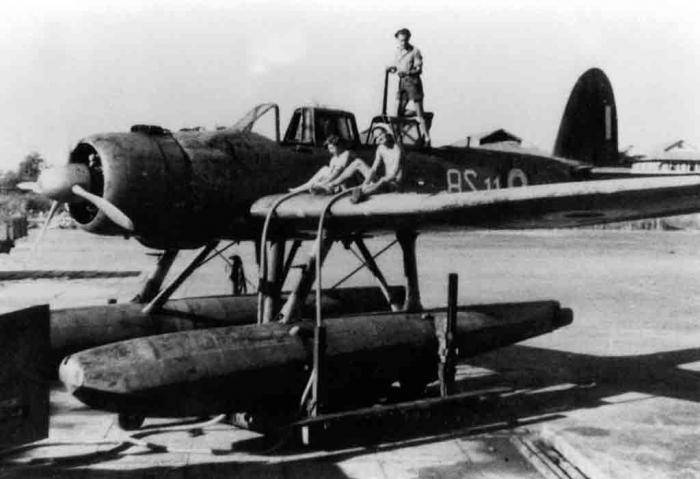
The only thing that brought to naught all the efforts of the Japanese was that the Americans were able to build aircraft carriers at a frantic pace and compensate for all the losses of the fleet in this class of ships.
Accordingly, wheeled fighters taking off from aircraft carriers easily and naturally dealt with the Japanese seaplanes.
But at the very beginning of the war, the seaplanes did a very good job for the benefit of the imperial fleet. There were even cases of "combat" use of "Reisu", although it looked more like an anecdote.
On December 7, 1941, the Kamikawa Maru, together with the seaplane carrier Sagara Maru, were part of the Southern Expeditionary Fleet of the invasion forces assigned to capture Malaya.
At 08.20 local time in the Gulf of Thailand, 20 miles northwest of Panjang Island, one of the Reisu from the Kamikawa Maru, piloted by Lieutenant Lieutenant Ogata Eiichi, noticed the British flying boat Catalina.
Ogata attacked the flying boat, ordering his gunner to shoot it down with ... a tail machine gun.
Reisu pursued the Catalina, piloted by Warrant Officer William Webb, for 25 minutes. Shooter Ogata fired all 8 magazines of his machine gun, But the Catalina 7,7mm bullets did not cause much damage. More damage was caused by the radio "Reis", with the help of which the army Ki-27 fighters were called, which eventually drove the "Catalina" into the water.
This flying boat was the first British loss in the Pacific.
By the way, "Reisu" was also noted in the airspace of the USSR. Despite the signed agreements on neutrality, in February 1942 E13A1 with Kamikawa Maru repeatedly visited the territory of the USSR in Kamchatka.
In June 1942, 8 Reisu units participated in the capture of Kiska Island on the Aleutian ridge and were engaged in reconnaissance in this area until May 1943. All 8 E13A1s were lost, moreover, without opposition from the enemy, which was not in the area. The bad weather was no less effective than the fighters.
The main losses "Reisu" suffered at the end of 1944, during the battle for the Philippines. A large number of these seaplanes were lost there. By the time of the final phase of the war, the battle for Okinawa, the surviving E13A1 were transferred to the "special attack units", that is, the kamikaze.
Detachments "Sakigake-tai" No. 1 and No. 2, "Kotohira-Suichin-tai" were staffed by former scouts E13A1 and E7K2. All alterations were reduced to the possibility of suspending a 250-kg bomb. During May 1945, the pilots of these units did everything in their power to confront the American fleet.
After the end of the war, the Reisu, scattered across the islands of the Pacific Ocean, basically found their ending in aircraft dumps. Although five E13A1s were used by the French for quite a long time in Indochina, where they flew until 1948.
Until 1948, six Reisu served in the Royal Thai Air Force.
Weak (no) defensive armament, lack of crew armor and protection of fuel tanks did not make Reis a unique aircraft. But for its time it was a very successful plane. Especially for the fulfillment of its main task: intelligence. The 10 hours that Reisu could stay in the air made it a truly irreplaceable machine.
Not a single operation of the Japanese fleet could do without the participation of long-range reconnaissance agents "Reisu". But these war workers have always remained in the shadow of their shock brethren. Although, to be honest, the pilots of bombers and torpedo bombers could not have much without the information that the scouts obtained.
From one and a half thousand Reisu, one plane has survived to this day, which was raised from the water by fanatical fans of the Japanese fleet (and there are a lot of them in Japan) and now the car is under restoration in the museum of the city of Sasuma.
And many Reisu are on display in the many lagoons of the Pacific Ocean and in the jungles on the islands around these lagoons.
A common story for losers.
LTH E13A1
Wingspan, m: 14,50
Length, m: 11,30
Height, m: 4,70
Wing area, м2: 36,00
Weight, kg
- empty aircraft: 2 642
- normal takeoff: 3 640
- maximum take-off: 4 000
Engine: 1 х Mitsubishi MK8D "Kinsei 43" х 1080 hp
Maximum speed km / h: 375
Cruising speed, km / h: 220
Practical range, km: 2 090
Maximum rate of climb, m / min: 495
Practical ceiling, m: 8 730
Crew, prs: 3
Armament:
- one 7,7-mm machine gun type 92 on a movable unit back;
- 1 x 250 kg bomb or 4 x 60 kg depth charges.
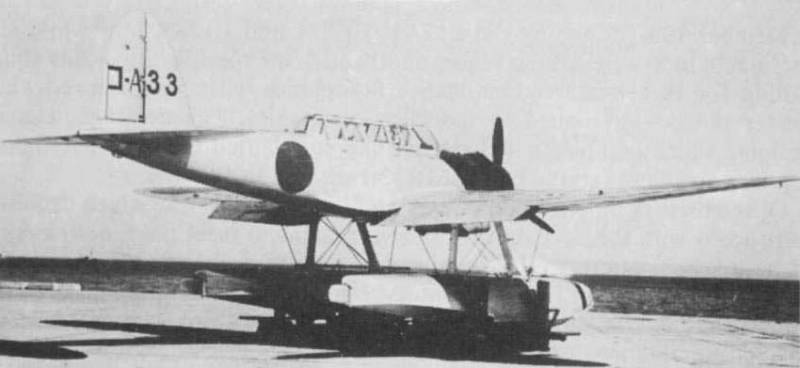
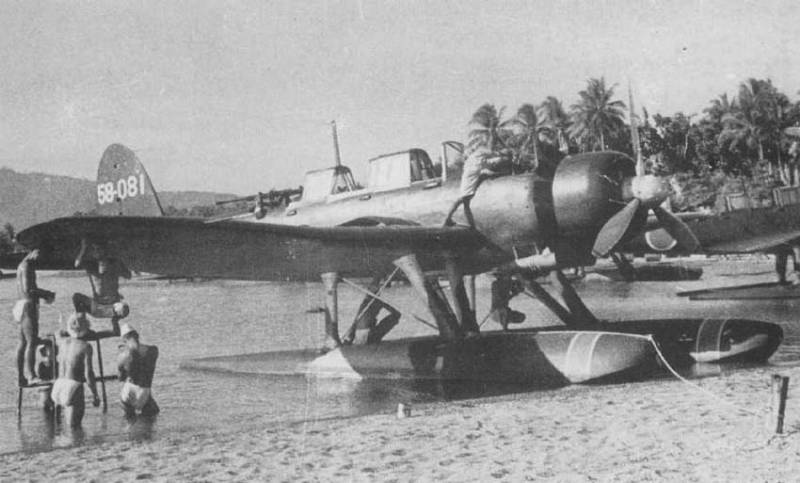
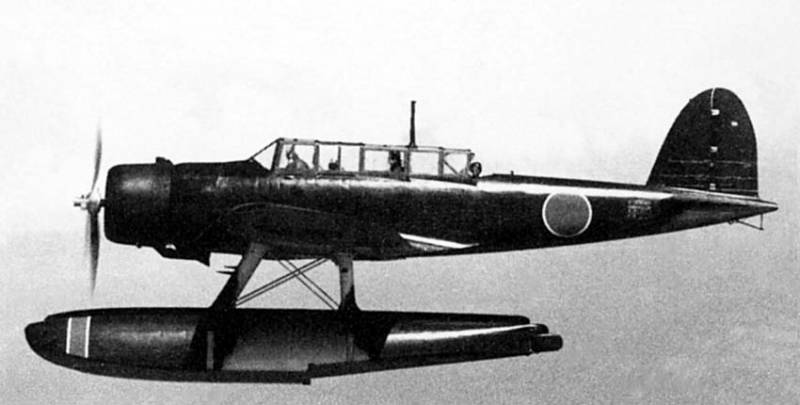
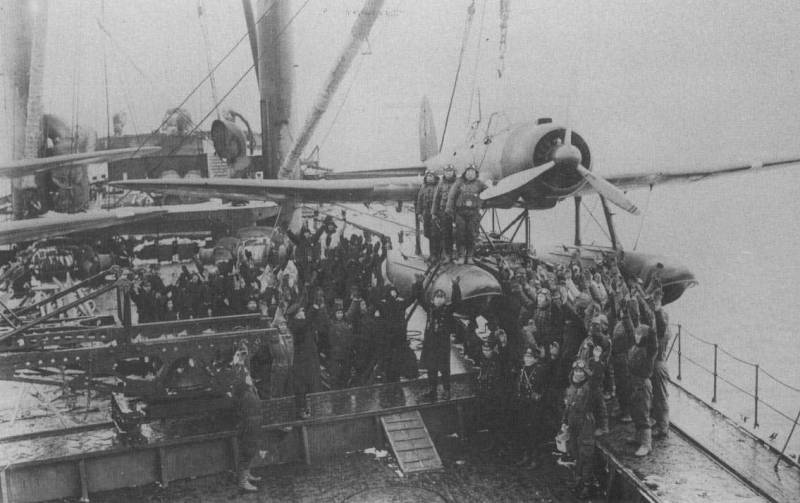
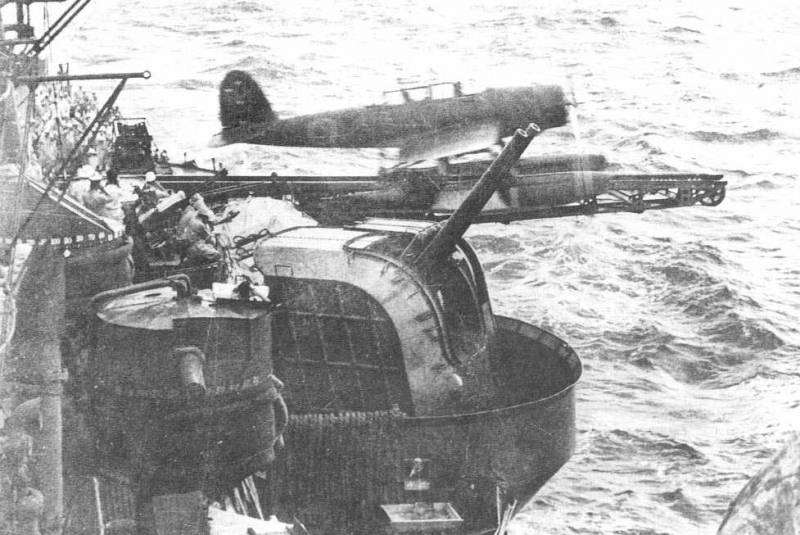
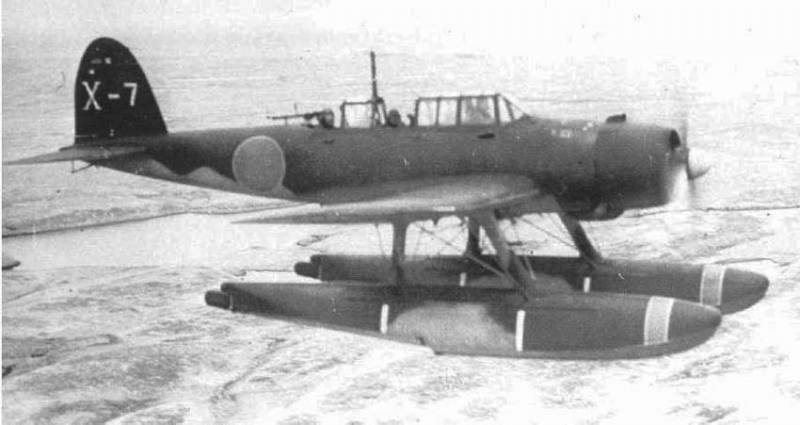
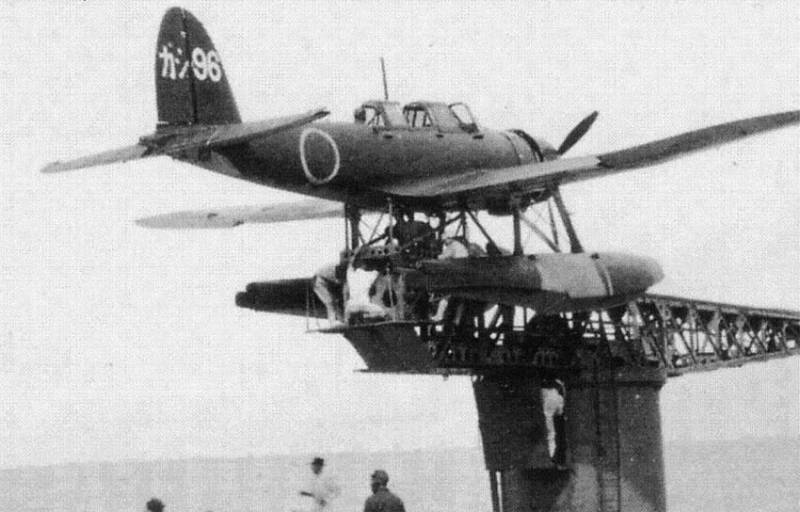
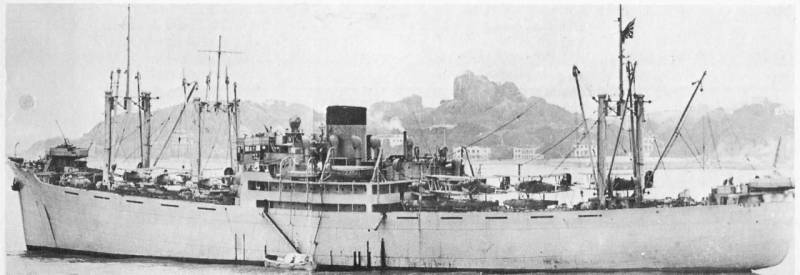
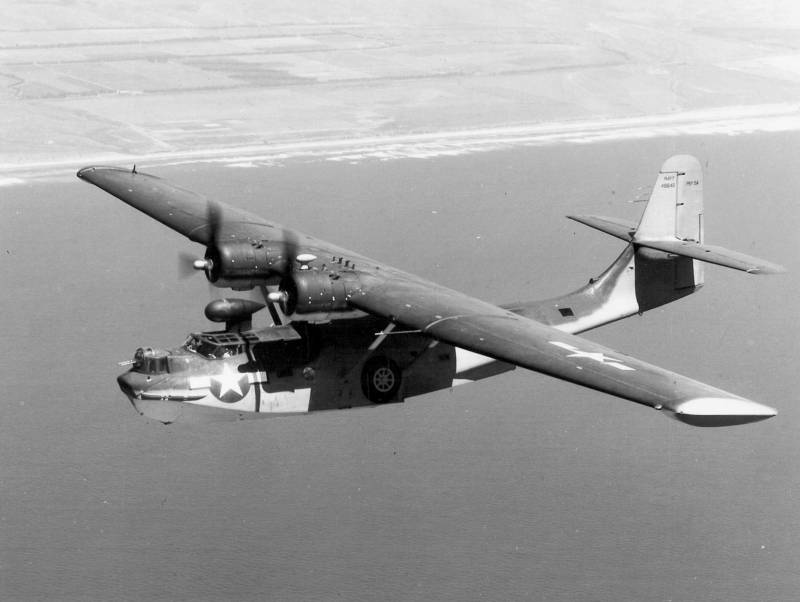
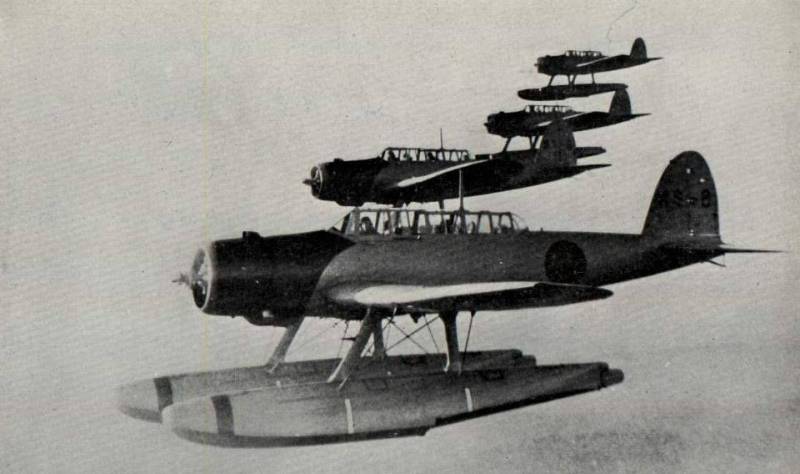
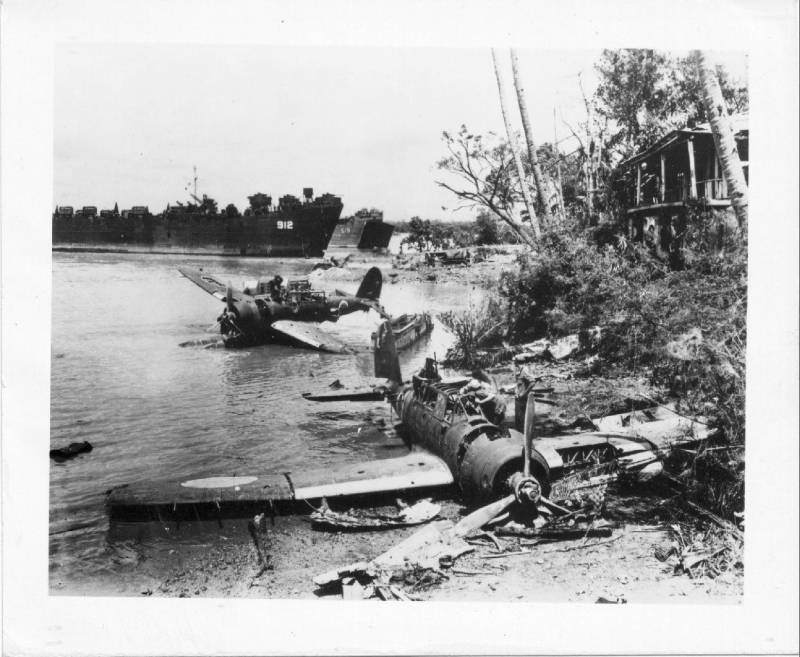
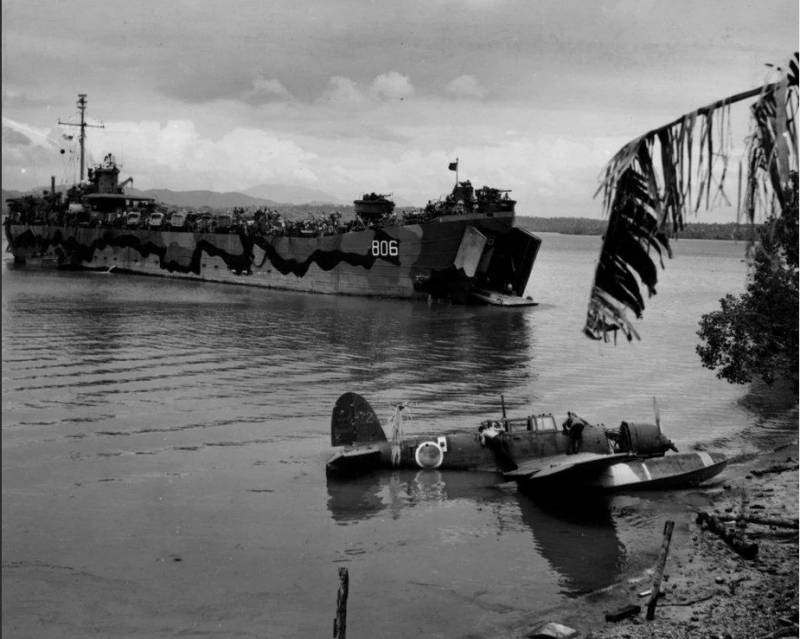
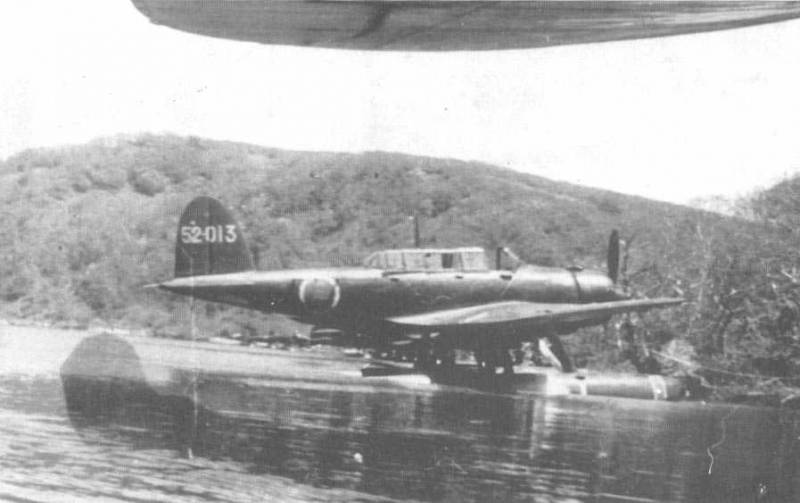
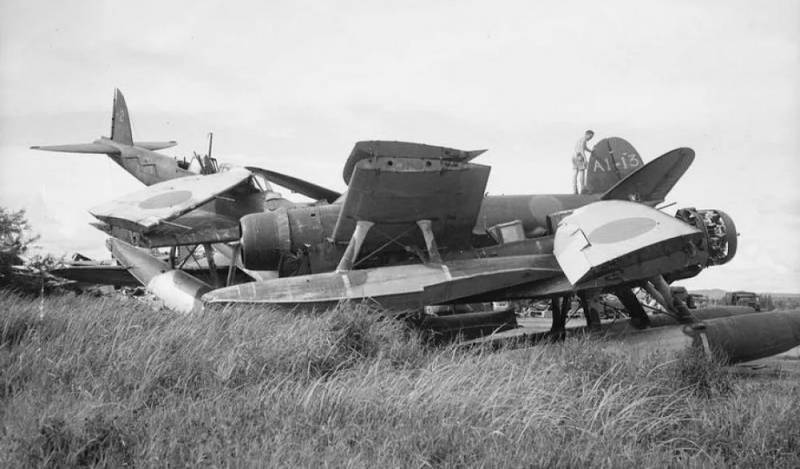
Information